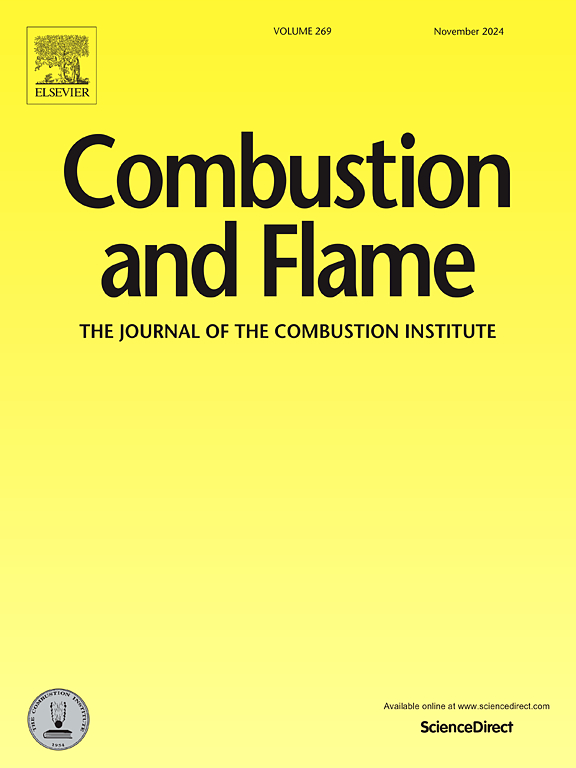Flame kinetics at scramjet-engine-relevant conditions: Role of prompt dissociation of weakly-bound radicals
IF 5.8
2区 工程技术
Q2 ENERGY & FUELS
引用次数: 0
Abstract
Combustion in high-speed ram-based propulsion engines occurs under distinct thermodynamic conditions of high reactant temperatures (greater than 1000 K) and relatively low pressures (<5 atm). There is a lack of fundamental flame measurements at such conditions that result in adiabatic flame temperatures (Tad) exceeding 2500 K. In this work, we have measured laminar flame speeds of oxygen-enriched CH4/oxidizer mixtures at sub-atmospheric conditions to probe kinetics at high Tad using the isobaric spherically expanding flame approach. Simulations with recent kinetic models revealed increasing differences between data and model predictions with increasing Tad, reaching up to 25 %. Kinetic analyses reveal that at the thermodynamic conditions in these O2-enriched flames, i.e., lower pressures and higher Tad, the effects of HCO prompt dissociation are accentuated. In addition to HCO, the prompt dissociations of CH2OH and C2H5 are also considered. The prompt dissociations of all three radicals were evaluated and their effects considered in flame speed simulations. Reaction path analysis for the present flames revealed that approximately half of the reaction flux for HCO formation undergoes prompt dissociation to H + CO. Furthermore, these analyses also revealed that the pathways and sensitive reactions are similar between oxygen-enriched fuel/oxidizer mixtures and preheated fuel/air mixtures, if both have similar Tad. Thus, flames of oxygen-enriched mixtures could be a surrogate to probe the flame chemistry of highly preheated mixtures at relatively low pressures that are often encountered in ram-based propulsion engine combustors.
求助全文
约1分钟内获得全文
求助全文
来源期刊

Combustion and Flame
工程技术-工程:化工
CiteScore
9.50
自引率
20.50%
发文量
631
审稿时长
3.8 months
期刊介绍:
The mission of the journal is to publish high quality work from experimental, theoretical, and computational investigations on the fundamentals of combustion phenomena and closely allied matters. While submissions in all pertinent areas are welcomed, past and recent focus of the journal has been on:
Development and validation of reaction kinetics, reduction of reaction mechanisms and modeling of combustion systems, including:
Conventional, alternative and surrogate fuels;
Pollutants;
Particulate and aerosol formation and abatement;
Heterogeneous processes.
Experimental, theoretical, and computational studies of laminar and turbulent combustion phenomena, including:
Premixed and non-premixed flames;
Ignition and extinction phenomena;
Flame propagation;
Flame structure;
Instabilities and swirl;
Flame spread;
Multi-phase reactants.
Advances in diagnostic and computational methods in combustion, including:
Measurement and simulation of scalar and vector properties;
Novel techniques;
State-of-the art applications.
Fundamental investigations of combustion technologies and systems, including:
Internal combustion engines;
Gas turbines;
Small- and large-scale stationary combustion and power generation;
Catalytic combustion;
Combustion synthesis;
Combustion under extreme conditions;
New concepts.
 求助内容:
求助内容: 应助结果提醒方式:
应助结果提醒方式:


